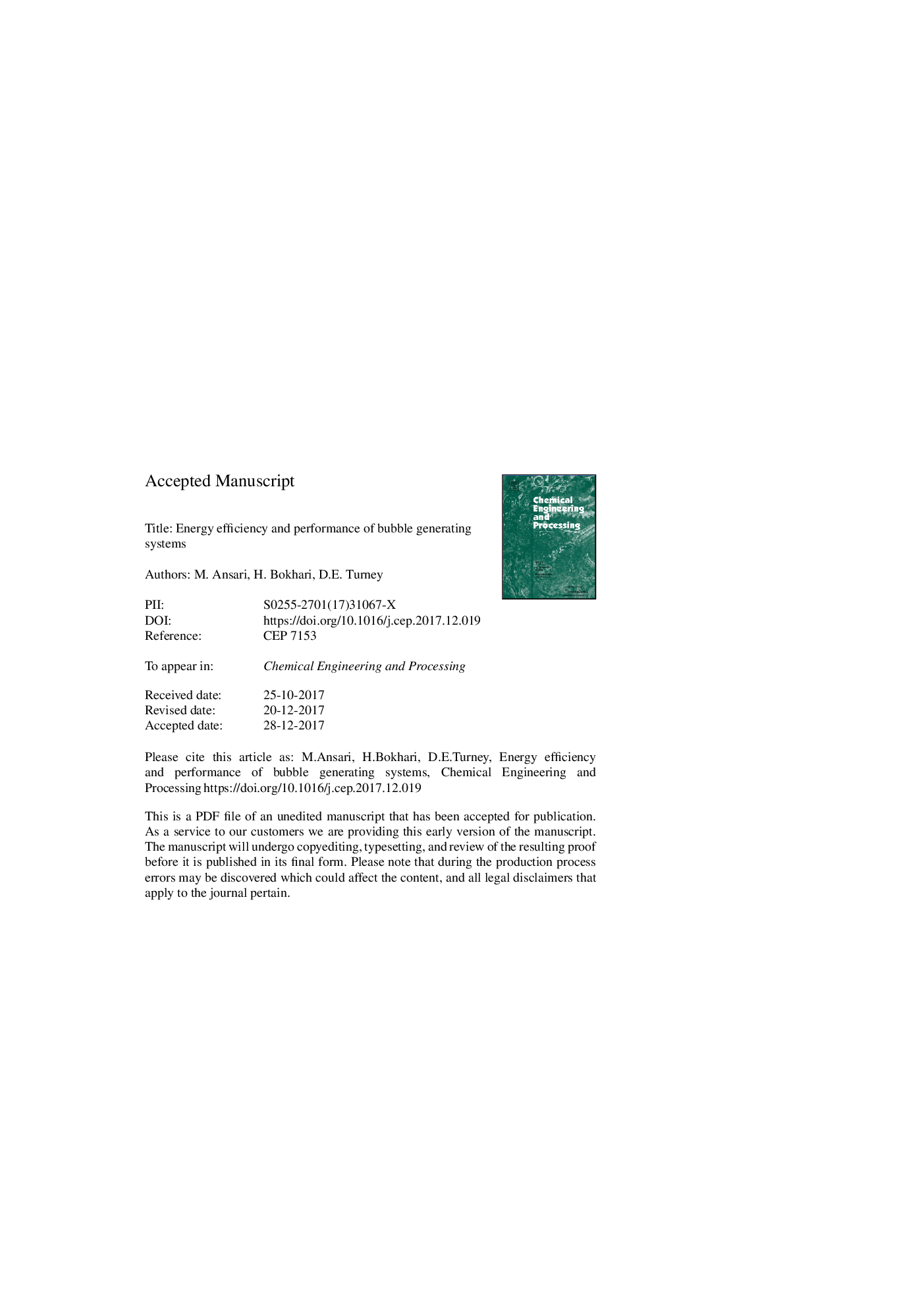| Article ID | Journal | Published Year | Pages | File Type |
|---|---|---|---|---|
| 7088833 | Chemical Engineering and Processing: Process Intensification | 2018 | 42 Pages |
Abstract
The energy efficiency of bubble generating systems of gas-liquid contacting reactors is reviewed and analyzed quantitatively. The key metrics that emerge from a new theoretical analysis are: i) gas fraction of the output dispersion (εgen), ii) interfacial area density of the output dispersion (agen), iii) the energy necessary to create interfacial area (ξ), and iv) cost and maintenance. These metrics are then used to create a literature review of the performance of existing technologies for bubble generation. thus producing a conceptual framework for process intensification and future designs for bubble generating systems. A novel micro-ejector device is then studied within this framework, and is found to have desirable performance, hypothetically because it limits fluid shear to be located on at the gas injection site, on micron size scales. A physical model of the gas entrainment and bubble creation mechanisms in the micro-ejector is described and validated with empirical data.
Related Topics
Physical Sciences and Engineering
Chemical Engineering
Process Chemistry and Technology
Authors
Manizheh Ansari, Hussain Haider Bokhari, Damon Economy Turney,
